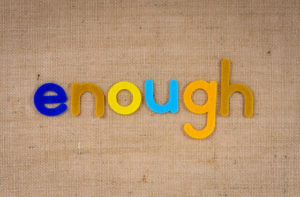In today’s article we are going to see the difference between the adverbs too (too much of something) and enough (enough or too much) in English, so that you will know how to use them properly. One of the first lessons you will be taught when you take a course at an English language school.
When do we use enough?
This adverb can be used with nouns, adjectives or other adverbs, and means “enough”. However, depending on the word it accompanies, it will occupy one position or another in the sentence.
Use of enough when accompanying nouns
When enough is used with a noun, it will occupy the same position as an adjective, that is, first enough and then the noun. It is used to make negative or interrogative sentences.
- I don’t have enough money to buy a new car. I don’t have enough money to buy a new car.
Use of enough when accompanying adjectives and adverbs
In this case, the adjective is placed first and then the adverb enough. This construction is used to formulate negative or interrogative sentences.
- The soup isn’t hot enough. The soup is not hot enough.
Use of enough for for + object structure
As with the adverb too, we can also use enough after an adjective or other adverb in the structure for + object, which can be followed by an infinitive with to.
- This bus is not fast enough for me. This bus is not fast enough for me.
- There are enough coins for you to buy some bananas. There are enough coins for you to buy bananas.
Solo use of enough
There is one last case for using enough, and that is when we use it only as if it were a pronoun.
- Buy more oranges if you haven’t got enough. Buy more oranges if you don’t have enough.
When do we use too?
The adverb too is used to express sufficiency or lack thereof. We can use it together with adjectives or other adverbs and, when we join it with many or much, we can also use it with nouns or alone.
Use of too with adjectives and adverbs
In this case, it is used to intensify their value. Too is placed before the adjective or adverb.
- The television is too loud. The television is set too high.
Use of too much and too many
Too much and too many are used when accompanying nouns. One or the other option is used to differentiate countable nouns from uncountable nouns and will be placed before the noun in question.
- The are too many people and there’s too much noise. There are too many people and too much noise.
Use of too for structure for + object
We can use after too and adjective or adverb the structure for + object, which can also be followed by an infinitive with to.
- This drink is too hot for me. This drink is too hot for me.
Differentiate adverbs in English
As you can see, differentiating the adverbs too and enough in English is essential to have a solid grammatical base and to formulate sentences correctly. You can learn to differentiate other adverbs such as already and yet to continue advancing in your English level.



